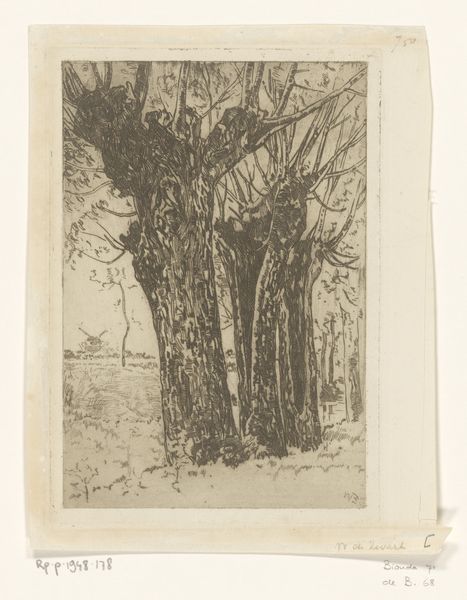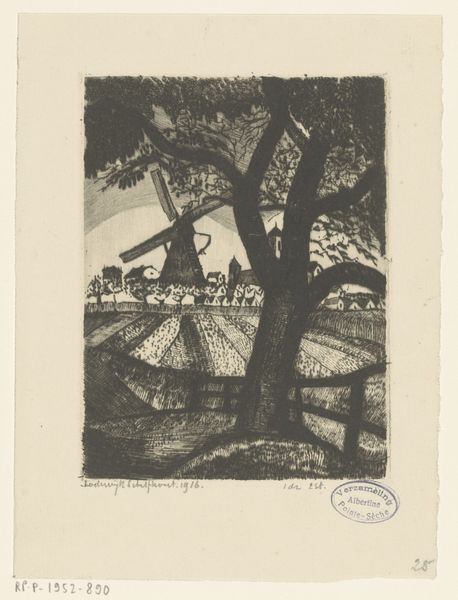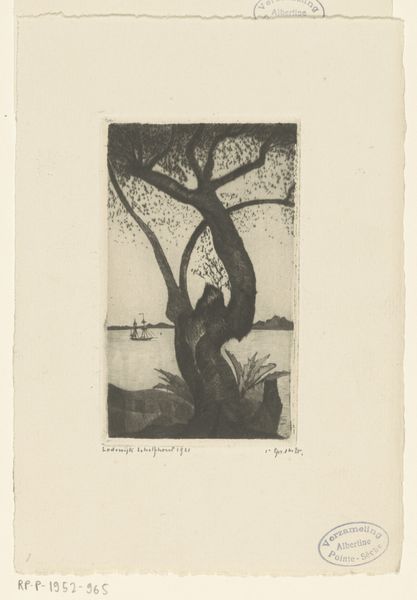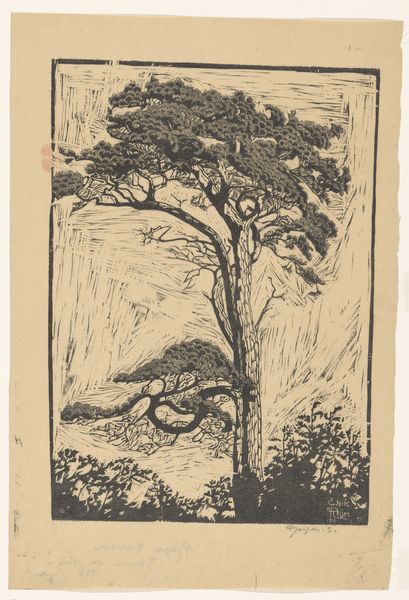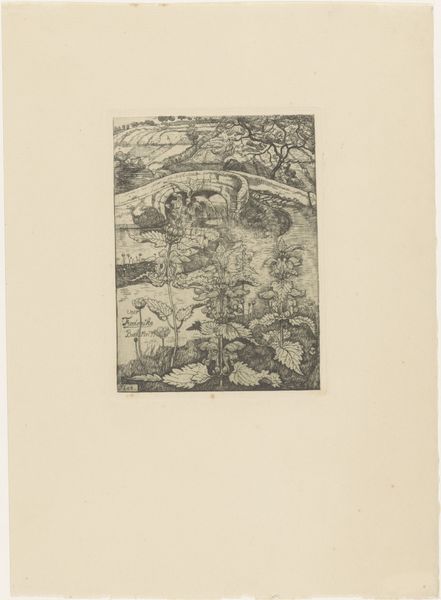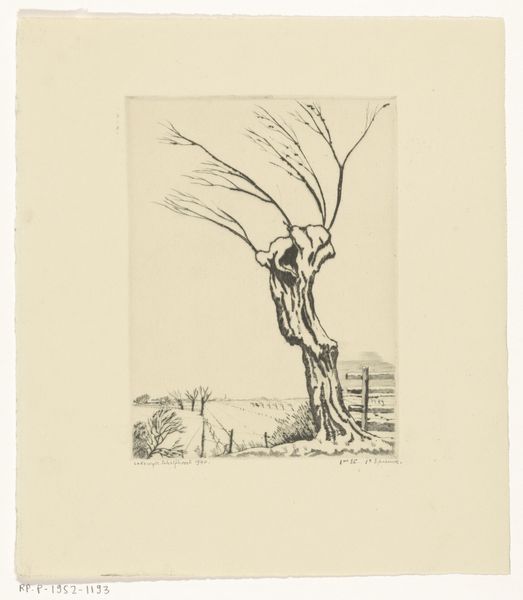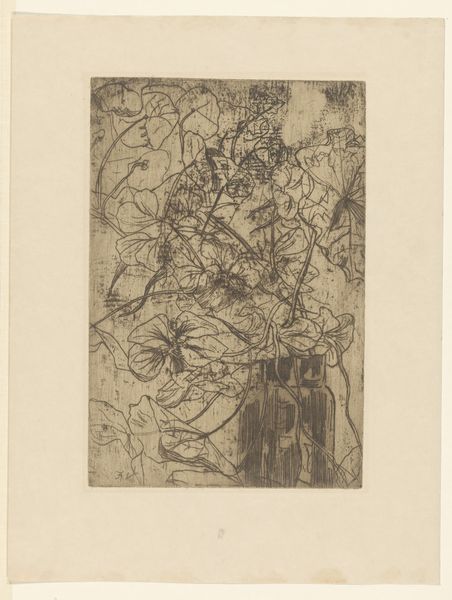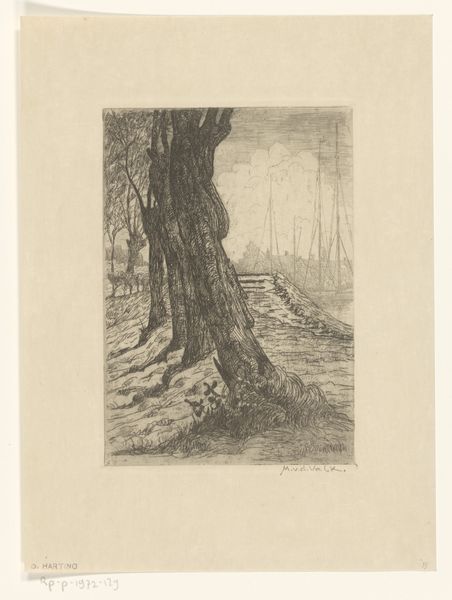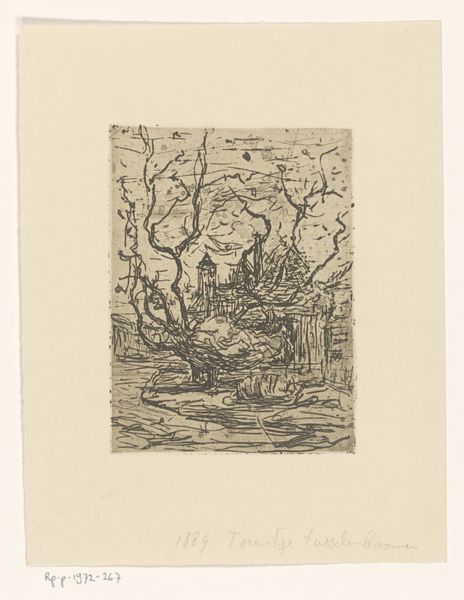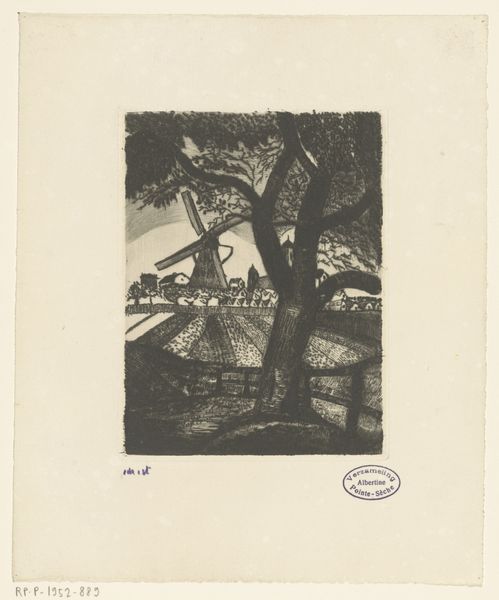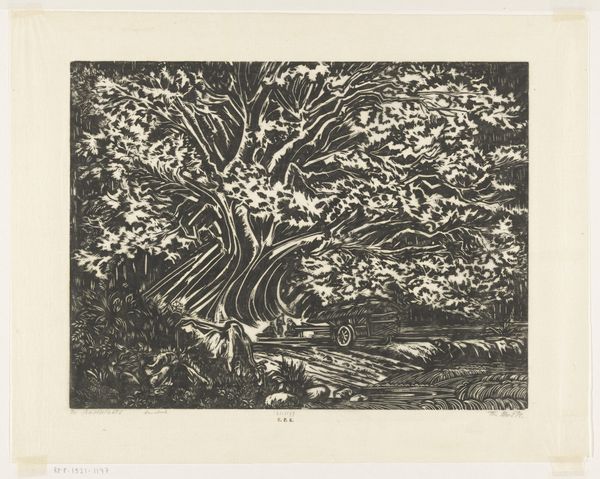
print, etching
# print
#
etching
#
landscape
Dimensions: height 162 mm, width 122 mm
Copyright: Rijks Museum: Open Domain
Curator: This etching, entitled "Heuvellandschap met nederzetting", or "Hillside Landscape with Settlement" in English, was created in 1916 by the Dutch artist Lodewijk Schelfhout. Editor: It has this rather somber, almost spectral feel. That old, gnarled tree in the foreground… it dominates everything, yet light rays pierce through it to the landscape, creating such a cool contrast. Curator: The tree is undoubtedly a central motif, representing endurance and perhaps a silent witness to the history unfolding below. The village, or settlement, nestled within the hills, evokes a sense of community, and also perhaps the quiet passage of generations. The stark contrast and etching technique lend a particular weight to it, too. Editor: Absolutely. There is also the symbolic weight of the church spire reaching into those heavenly rays. I sense both melancholy and hope interwoven, like strands of fate. Does the "settlement" signal the idea of resilience, survival perhaps? Curator: Indeed. Schelfhout made this etching in the midst of World War I, and these images, the solid, rooted tree and the tight-knit village, would become poignant symbols of refuge amidst a world plunged into darkness. And remember that Landscape art provides visual symbols, evoking the unique history and emotional value we place on those familiar settings. Editor: It's intriguing how Schelfhout uses the landscape to convey so much emotion. A few simple lines become this intense study of contrast: fragility against the monumental, earthly versus the divine, turmoil versus tranquility. What I initially read as somber has many complex layers. Curator: Well said. When we engage with a work like "Hillside Landscape with Settlement", it's vital to see how it continues to reflect timeless needs – to have a safe place, to carry cultural memory through a symbolic form, to find our own sources of hope in the shadows. Editor: Thank you for leading us through its intricacies. I came for a melancholy landscape and left pondering both shadow and light, the weight of history and potential rebirth.
Comments
No comments
Be the first to comment and join the conversation on the ultimate creative platform.
